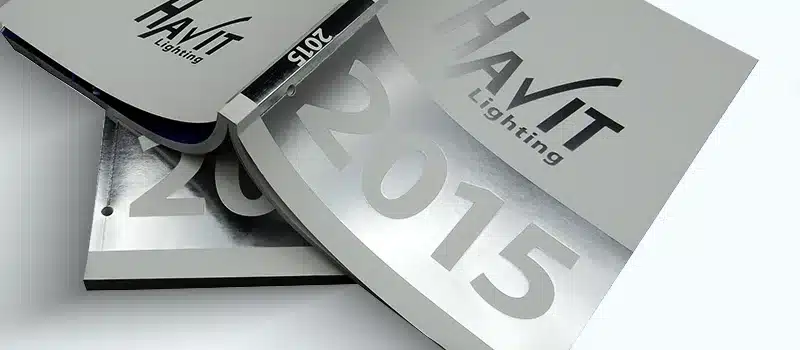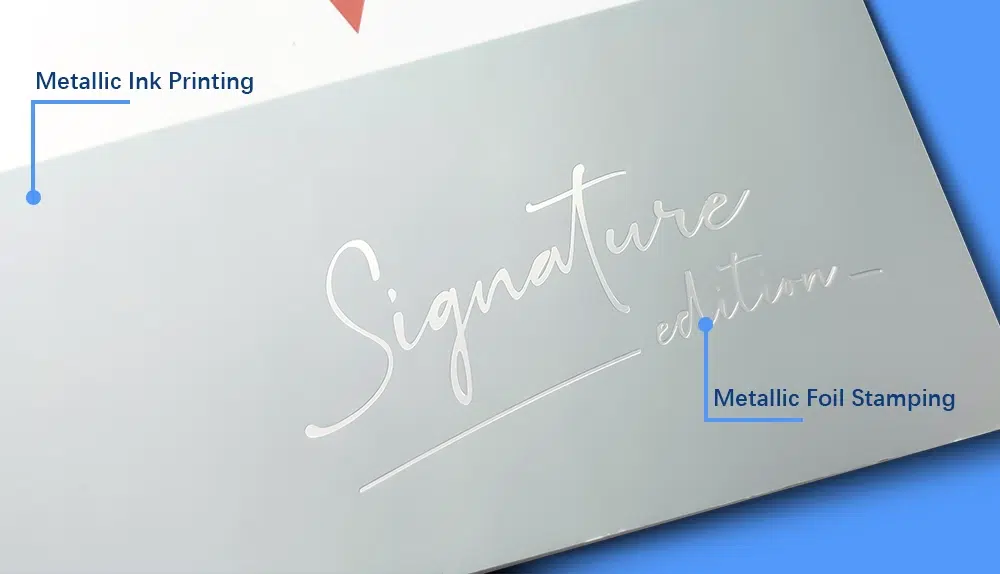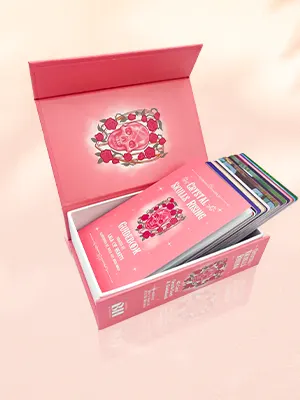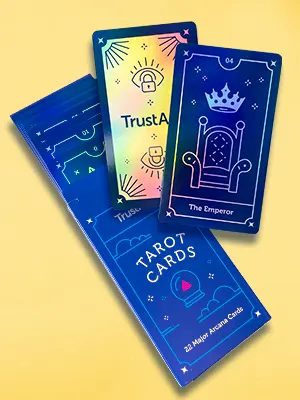Metallic Ink Printing

What Is Metallic Ink Printing?
Metallic ink printing uses inks loaded with fine metallic pigments (e.g., aluminum or bronze) to create a reflective, metal-like sheen—richer than standard CMYK. Metallics are printed as spot colors, and can run in the same pass as CMYK for a clean, integrated look.
Metallic Color Options & Swatches
We support the Pantone® Metallics systems. Popular choices include:
- Pantone 871 C–877 C (classic golds & silvers)
- Pantone 8001 C–8985 C (expanded metallic range)




















Notes:
- Final appearance depends on the paper/board and any coatings—always evaluate on your target stock.
- We can mix custom metallic tints or print CMYK over metallic silver to create tinted metallic hues.
- A printed drawdown on your chosen stock is the most reliable swatch.
Metallic Ink vs. Standard CMYK
- Optical effect: Metallics reflect light via metal flakes (subtle–moderate sheen). CMYK is non-metallic.
- Color build: Metallics are spot colors; CMYK builds color with transparent halftones.
- Opacity: Metallics cover better than CMYK but are not fully opaque; stock color and coating will influence the result.
When to Choose Metallic Ink
Use metallic ink for logos, rules, borders, patterns, titling, and anywhere you want premium sparkle without a separate foil pass. For mirror-like shine or full opacity on dark stocks, consider foil stamping.
Metallic Ink vs. Foil Stamping (What's the Difference?)
- Look: Metallic ink = brushed/pearlescent sheen; foil = mirror-like, highly reflective.
- Detail & registration: Metallic ink holds fine type, thin lines, and halftones well. Foil excels with bold shapes and clean, solid areas.
- Cost & speed: Both require setup. At runs under ~1,000 pieces, setup costs are comparable. Above ~1,000, metallic ink is typically more economical because it prints in the same pass as CMYK—making it faster overall.
- Opacity: Foil is fully opaque and sits on top of the surface. Metallic ink is semi-opaque; effect depends on substrate, coating, and the specific metallic ink.

Design & Prepress Guidelines
- Design metallic areas as a Pantone spot color layer in addition to CMYK. General practices are similar to CMYK with a few key points:
- Opacity behavior: Metallics are semi-opaque. If you stack metallic over CMYK, the metallic will visually dominate and may mask fine CMYK detail beneath—plan overlaps intentionally.
- Halftones: Yes—use halftones/gradients for lighter metallic effects. Sheen is strongest in solids; halftones appear subtler.
- Coverage: Large metallic solids raise scuff/set-off risk—specify a protective coating.
- Dark stocks: Results vary by ink and stock. For stronger coverage, consider a white underprint (offset white is limited; UV/screen white is more opaque).
Spot Metallic + CMYK Registration Tips
- Plan for registration tolerance of ±0.1 mm.
- Add trapping where metallic meets contrasting CMYK.
- Avoid tiny metallic knockouts surrounded by dense CMYK.
Spot Color Setup (naming, swatches, vector preferred)
- Define metallics as Pantone spot colors (e.g., “Pantone 871 C”).
- Use vector for linework/type when possible; raster elements ≥300 dpi.
- Name layers clearly (e.g., Metallic_Gold_P871C) to prevent preflight ambiguity.
Compatible Finishes (spot UV, emboss/deboss)
- Metallic ink pairs beautifully with emboss/deboss and spot UV for contrast and texture.
- You can combine metallic ink and foil—confirm stacking order to avoid impression or gloss conflicts.
Lamination & Coating Over Metallic Ink
- Gloss lamination enhances apparent shine.
- Matte/soft-touch slightly mutes the metallic effect but adds a premium feel.
- Apply coatings/lamination only after inks are fully cured to minimize rub/scuff.
Applications & Inspiration
- Packaging (premium boxes, sleeves, hang tabs): metallic lines, borders, icons, repeat patterns.
- Book Covers & Slipcases: titling, author names, subtle background motifs.
- Cards, Invitations, Stationery, Labels: crests, seals, accents; halftone metallics for gradients and textures.
FAQs
How shiny is metallic ink compared to foil?
Can I print metallic ink on dark paper?
Yes, but results vary. Gold/silver metallics can work on dark stocks; for higher opacity, consider a white underprint or switch to foil.
Do I need a separate plate for metallic colors?
Yes. Metallic ink prints as a spot color with its own plate.
Will a coating dull the metallic effect?
Matte/soft-touch can slightly mute the sheen; gloss enhances it. Aqueous coatings help protect against rub with minimal optical change.
Can I combine metallic ink with embossing or spot UV?
Yes—common on premium packaging. Use emboss/deboss for dimension and spot UV for gloss contrast.
Can I use halftones with metallic ink?
Yes. Halftones create gradients and lighter metallic areas. The strongest sheen occurs in solid areas.
Can I get a physical sample that shows true metallic ink?
Digital hard proofs simulate CMYK only and cannot reproduce true metallic. For accurate evaluation, we can:
- run a short offset press test (a few pages with your metallic areas), or
- provide recent metallic drawdowns we’ve printed on similar stocks.
Offset tests involve plate and ink setup, so costs are higher than digital proofs.
Related Resources



